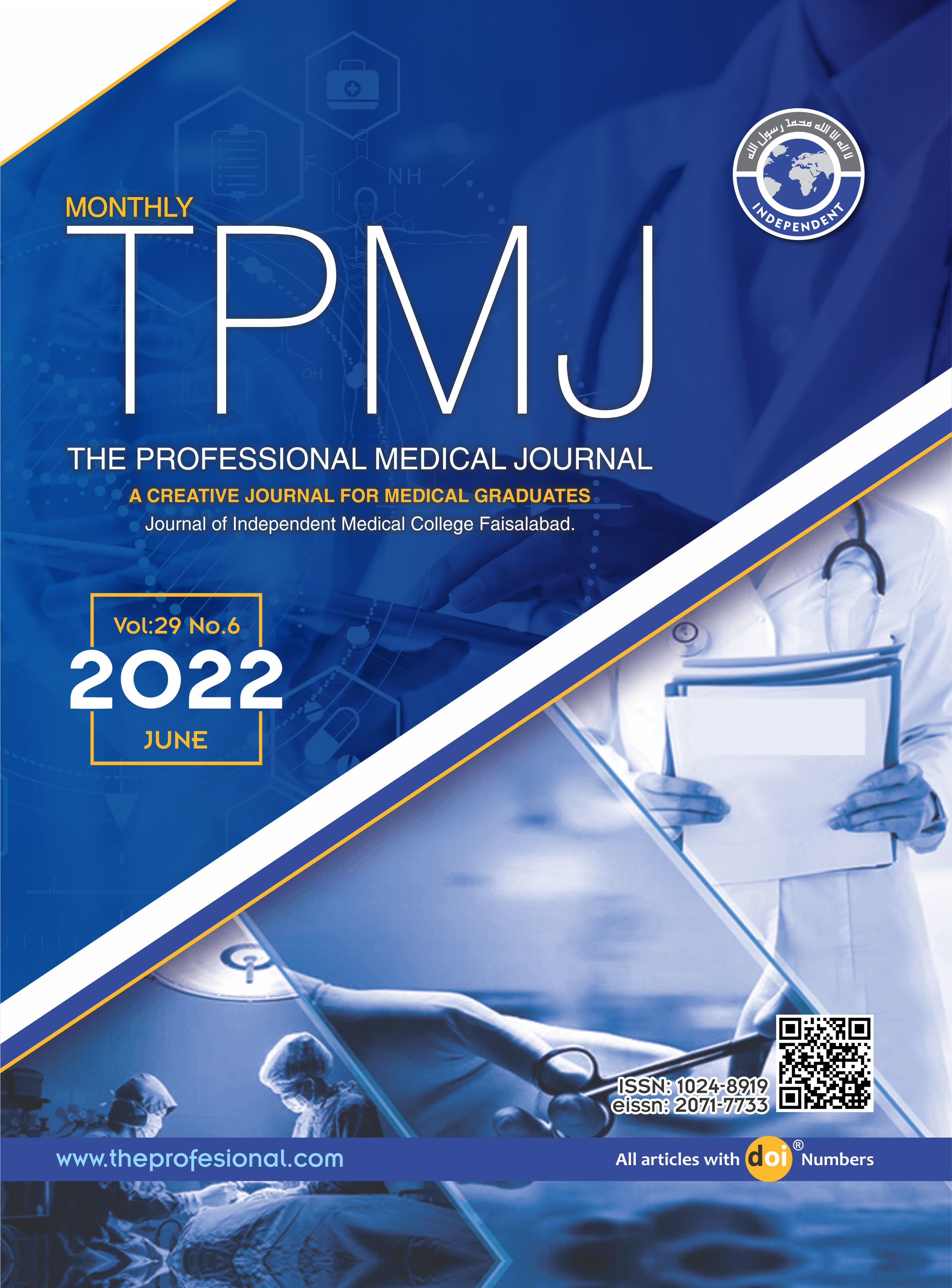Preoperative scoring system in predicting difficulty in laparoscopic cholecystectomy.
DOI:
https://doi.org/10.29309/TPMJ/2022.29.06.4674Keywords:
Gall Bladder, Laparoscopic Cholecystectomy, Total Lymphocyte Count, Ultrasound AbdomenAbstract
Objective: To evaluate a scoring system in predicting difficulty in laparoscopic cholecystectomy. Study Design: Non-Randomized Prospective study. Setting: Surgical Unit-1 of Holy Family Hospital, Rawalpindi. Period: January 2018 to September 2018. Material & Methods: Patients with symptomatic gallstone disease that were admitted in SU-1 of Holy family hospital during the above period were included in the study. For collection of data, a pre-tested questionnaire was used after taking informed oral consent. On admission, one day before the surgery, preoperative points were allotted on basis of patient’s history, examination, hematological (CBC), biochemical (LFTs) and ultrasound results. Preoperative scores up to 5 was summed up as easy, scores 6 – 10 as difficult, 11 – 16 as very difficult. Calculated sample size was 229. SPSS version 22 and WHO Anthro calculator version 3.2.2 were used for data entry and analysis. Results: Among 230 patients that were included in the study, 188 were female and 42 were male. Various risk factors were found to have significant positive correlation with intraoperative difficulty during cholecystectomy. These are: Previous episodes of cholecystitis and pancreatitis (p=0.00), ERCP (p=0.00), tenderness in right hypochondrium (p=0.002), hepatitis serology (p=0.02), and Total Leukocyte Count (p=0.006). Whereas the following factors had insignificant relation with intraoperative difficult cholecystectomy: ALT and ALP (p>0.05, p=0.06 and 0.26 respectively) and hepatits serology (p=0.406). A significant correlation was found between preoperative and intraoperative scores of the patients (p=0.003) indicating that preoperative assessment of various risk factors can predict the level of difficulty of cholecystectomy and its conversion to open cholecystectomy. Conclusion: We may conclude that the scoring system evaluated in our study is a sturdy, reliable and useful benchmark to predict difficult cases. Preoperative prediction of the risk factors of conversion or difficulty of operation is an important point for operative planning and the high-risk patients may be informed accordingly.
Downloads
Published
Issue
Section
License
Copyright (c) 2022 The Professional Medical Journal

This work is licensed under a Creative Commons Attribution-NonCommercial 4.0 International License.


